The subject of pistol sights is one that comes up much more often as of late. I am sure this is likely due to the plethora of options now available. It used to be, you had a choice of iron sights or… iron sights. Boy! How times have changed.
But have they really changed for the better? You didn’t ask, and may not want to hear it, but here is my opinion on the subject anyway. We should probably take a quick look at the history of sights first.

Early Days
I am sure it is obvious that if you can’t aim a firearm, you can’t hit a target. And, the key to hitting a target is a good sighting device. Steel or polymer are the typical materials of choice these days for sights. However, in the early days of firearms, these were in fact made of iron and the name stuck.
Modern firearms have sights made up of two parts, a front sight — usually close to the muzzle of the firearm— and a rear sight that is close to the breech of the firearm. To aim, the shooter positions the firearm so that the two sights are in aligned with the target.
Fixed sights are the first type of sights invented. Back in the early days of firearms, the range of weapons was limited (rifling had not yet been invented). If a person wanted to shoot at a target that was farther away, he would merely aim a bit higher, based on personal experience with the weapon.
Once rifling was invented, and projectiles could fly farther on a predictable trajectory, a means of pointing the weapon precisely became more important. At first. a bead was attached to the front of the barrel and precision depended on the shooter positioning his eye consistently — much the same way shotguns are pointed today. As the range of the rifle increased, a consistent rear position was required. The rear portion of the sight was soon developed and that became the first ‘iron sight.’

What are iron sights?
Early iron sights were comprised of two parts. The front sight was placed close to the muzzle. The rear sight was positioned past the midpoint of the rifle closer to the rear of the barrel. Initially, these parts were fixed. However, as time passed and technology improved, they became adjustable to accommodate for elevation and windage.
It must be kept in mind that with iron sights there is no magnification. The user simply aligns the front and rear to the target and presses the trigger. The principal parts of most iron sights are a bead or a post in the front and a notch in the rear. Later, for more precise shooting a ring or aperture was developed.

The primary attraction of iron sights is their simplicity — in that very little can go wrong with them. They are sturdy and are not affected by the weather or temperature. They are simple, and it’s easy to learn how to use them properly.
Iron sights are usually compact and of low-profile. As such, they are less likely to get knocked out of alignment when handling the gun. They are also light and do not affect the balance of the gun.
The only disadvantages might be that they are not as precise as some other sight types. Iron sights can be difficult to adjust precisely because aiming is based on how good the user’s eyesight is. With the Open type of iron sights, the rear sight is simply a flat piece with a notch cut in the middle.

The notch can be V-shaped, square-shaped, or U-shaped. The front sight is usually some sort of ramp or post. Shooters learn to compensate for targets at different distances or for crosswinds by using a technique called “Kentucky windage.” Kentucky windage is where the shooter holds off the target to the degree that his experience dictates is required to make the shot.
An experienced marksman can use sights such as these effectively to about 300 yards or so, but most shooters have trouble using them effectively at 100 yards. As firearms became more accurate at longer ranges, sights became more sophisticated. As a result, the adjustable sight came into being.
Adjustment
At first, the rear sight was only elevation-adjustable to compensate for the bullet drop. Then, an accommodation for windage was invented to adjust left to right. Additionally, the difference between handguns and rifles was recognized, and sights became more platform specific.
The aperture sight was concurrently developed during this period. Aperture sights are similar to open sights, except that the rear sight is a ring with a hole cut through the middle of it. The front sight on an aperture sight is similar or identical to an open sight (i.e., it may be a ramp, post, or a bead) or it may have a ring also.
The user looks through the rear sight ring and aligns the front sight to the target. Due to the way that the human eye focuses, the front sight and the target are sharp, focused, and subconsciously centered in the aperture. The rear sight ring appears blurred to the eye. Hence, such sights are also called peep sights or ghost ring sights.
Aperture sights do have one big advantage over open sights. With open sights, there are three points that the human eye must focus on simultaneously: the rear and front sight and the target. Since these three points are at different distances from the eye, it is hard to focus on all three simultaneously.

In fact, only younger people with good eyesight can really do this properly. Older people, and people with farsightedness, find it much harder to do this correctly — hence it is harder for individuals with less-than-perfect eyesight to aim an open sight with precision. With aperture sights, there are only two points of focus: the front sight and the target.
The eye looks through the rear sight ring automatically and places the front sight in the center of the rear sight (without consciously attempting to do so) making the rear sight appear as a ghostly ring. This makes it much easier to aim the aperture sight with precision for longer-range shooting. It is slower and not at all suited for close quarters combat or charging dangerous game.

Aperture sights first started to gain popularity in the late 19th century for rifles. The early aperture sights came in two types, the tang type and ladder type. The difference between the two really has to do with where the rear sight is placed and adjusted.
On a ladder type, the rear sight is on the barrel and can be folded down when not in use. The rear sight can be slid up and down the ladder to adjust for range. The tang type is mounted behind the action and is therefore closer to the user’s eye. Tang sights can also be folded down and the aperture moved up and down for range. They could also be adjusted for windage.
Many sights also had vernier scales or micrometers (screw gauge) attached, so they could be adjusted more precisely. Such sights were often made by third party specialist manufacturers, such as Marble Arms Co., Lyman Gun Sight Co. etc. Vernier sights were often installed separately by the owner of the rifle. Sights such as these were common in the wild west and used in historically significant rifles such as the Sharps and Winchester lever-action rifles.

Handguns
While all the emphasis was on rifle sights, the handgun sight remained a half-moon blade of varying height and a grove in the top of the frame. Certainly nothing fancy, but a handgun was for up close and personal. About the only thing you could do to increase a handguns effective range was to increase the sight radius by ordering one with a longer barrel, such as the Buntline Special.
It was not until 1896 when the C96 Broomhandle Mauser appeared, with a high-velocity cartridge, that an adjustable sight appeared on a handgun. Still, adjustable sights on handguns remained an anomaly until the target pistols of the 1920s and did not become somewhat common on revolvers until the 1930s.
Adjustable sights appeared as a standard feature on the Smith and Wesson Registered Magnum and going forward as standard on all its larger framed six guns. Autos resisted improved sights and many early models had no sights at all or only a small bead on the forward part of the slide. Those that did have sights usually suffered from small blades in the front and small notches in the rear.

In truth, useful pistol sights did not appear until Jeff Cooper’s Leather Slap Competitions of the 1960s started to stress the need for easily acquired sights for fast accurate shooting. It was at that time that Jim Hoag fashioned early replacement sights for the 1911s that became popular at the time. The only adjustable type of sights during the 1950s and early ’60s was those available on the Colt God Cup marketed exclusively to Bulls Eye Shooters.
The Gun Control Act of 1968 was helpful in establishing adjustable sights on defensive handguns. Adjustable sights supplied necessary points to handguns that would not otherwise qualify. Handguns such as the Browning 1910/71 that had adjustable rear sights and a thumb rest that qualified it as a target gun. That’s the type of rank stupidity displayed by congress, but it did keep a good handgun available.
Adjustable sights for the most part did not become popular on defensive handguns until the 1980s when aftermarket products appeared to satisfy the need, and they have been improving ever since. Indirectly, Jeff Cooper was responsible for the rise in demand for adjustable sights.

The good Colonel arranged for Hornady to supply the ammunition for the 1981 IPSC Nationals. The bullet they loaded was not the ball competitors had been shooting. Instead, it was a flat nose bullet. Because going forward competitors had to shoot the supplied ammunition, adjustable sights made more sense, and the Bomar sights that appeared in the late 1970s and early 1980s set the stage.
Today, adjustable sights are every bit as rugged and reliable as fixed sights. I recommend adjustable sights to my students on their fighting handguns and yes, I know it goes against orthodoxy. My reason is simple. I know adjustable sights might not be as durable as fixed sights, but civilians do not expose their firearms to the same abuse as the military or police.
However, civilians have a problem that most instructors don’t address and that is ammunition availability. Let’s say you have chosen a brand, bullet weight, and type and zeroed your gun at 25 yards by drifting your non-adjustable sights. Because you practice regularly as you should, you run low or out of your chosen load. When you try to restock, your choice is not available.

As a result, you buy another well respected defensive load from another manufacture and the bullet style and weight are different. By the way, you get the last two boxes you could find of anything. You go to the range, and it shoots good but way off your current zero. So, you have to re-drift, file, or even change the front sight.
With adjustable sights, a turn or two with a turnscrew and you are in business with a minimum of ammunition and time expended. Voilà! Adjustable sights for the civilian make a lot more sense to me than ultra rugged fixed. That’s my story, and I’m sticking to it!
How often do you check/adjust the iron sights on your guns? Share your answer and tips or tricks in the comment section.

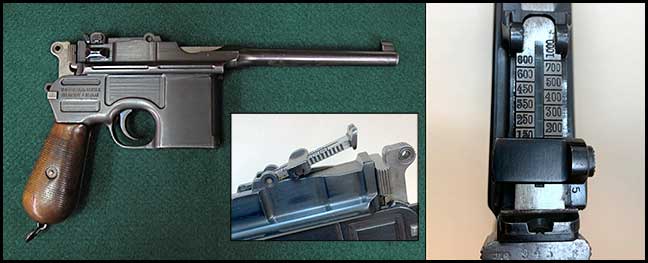
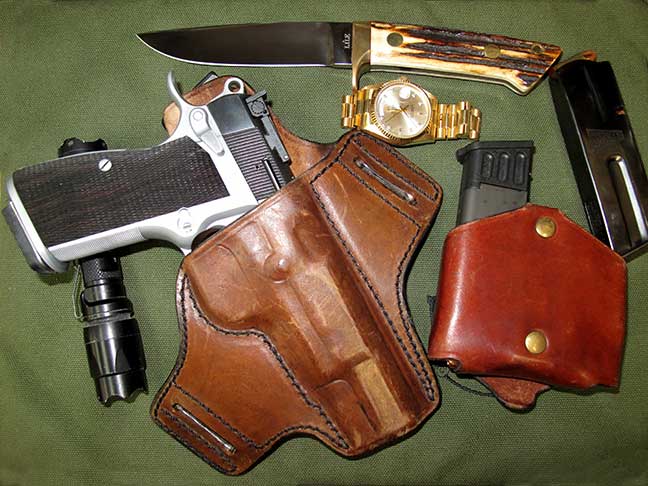



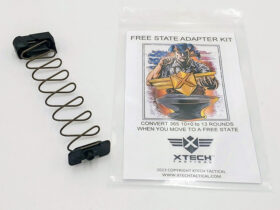
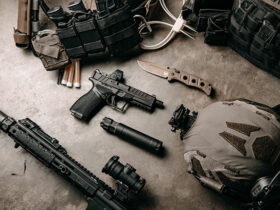
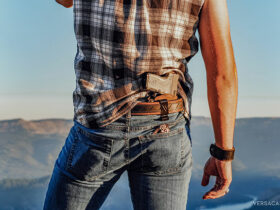
Leave a Reply